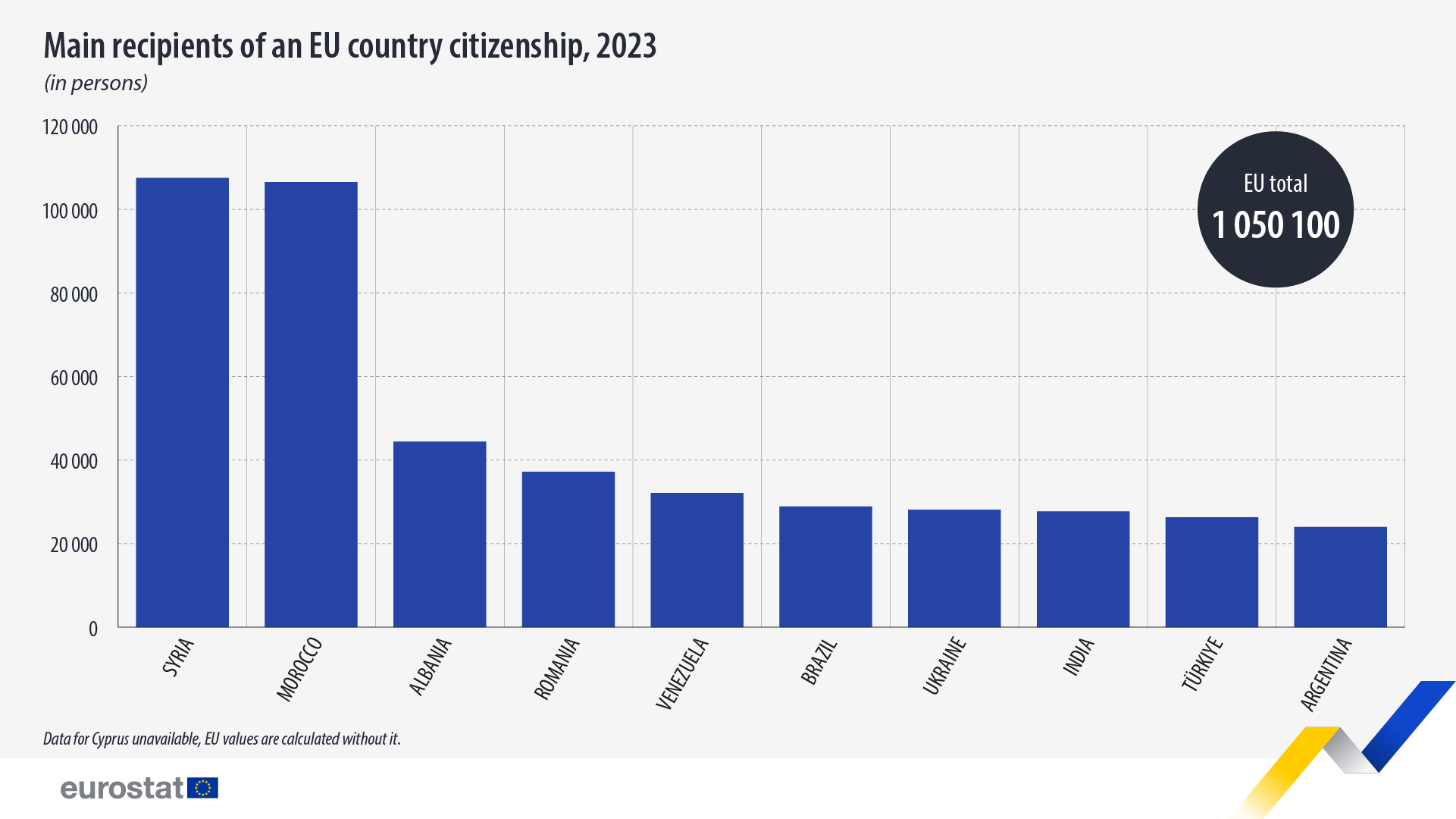
In 2023, 1.1 million people acquired the citizenship of the EU country where they lived, an increase of around 6.1% (+60 200 people) compared with 2022.
Most of the new citizenships were granted by Spain (240 200; 22.9% of the EU total), Italy (213 600; 20.3%) and Germany (199 800; 19.0%).
The majority (87.6%) of the people granted an EU citizenship were citizens of a non-EU country. Citizens of another EU country than the country of residence accounted for 10.7%.
This information comes from data on the acquisition of citizenship published by Eurostat today. This article presents just a handful of findings from the more detailed Statistics Explained article.
In 2023, Syrian nationals were the largest group of new EU citizens, with a total of 107 500 new citizenships granted. The second largest group were Moroccan nationals with 106 500 granted citizenships, followed by Albanians (44 400).

Source dataset: migr_acq
The naturalisation rate is the ratio of the number of persons who acquired the citizenship of a country where they were living during a year over the total number of non-national residents in the same country at the beginning of the year.
In 2023, Sweden recorded the highest naturalisation rate among EU countries, with 7.9 citizenships granted per 100 non-national residents, followed by Romania (5.9) and Italy (4.1). At the other end of the scale, the lowest naturalisation rates per 100 non-national residents were recorded in the Baltic states: Lithuania (0.1), Latvia (0.4) and Estonia (0.5).

Source dataset: migr_acqs
Source: Eurostat, https://ec.europa.eu/eurostat/product?code=ddn-20250228-1